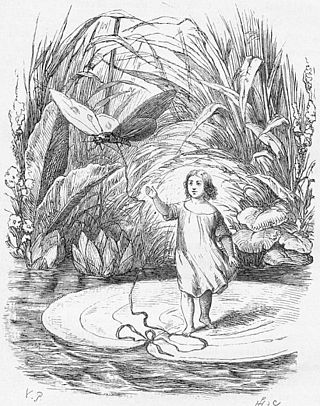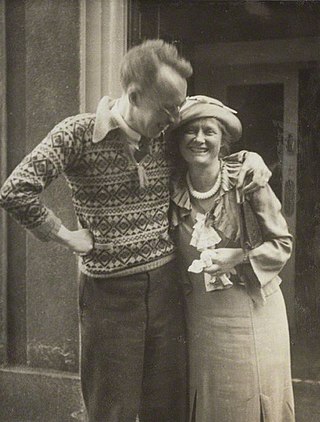
Hans Christian Andersen was a Danish author. Although a prolific writer of plays, travelogues, novels, and poems, he is best remembered for his literary fairy tales.

"Hansel and Gretel" is a German fairy tale collected by the Brothers Grimm and published in 1812 as part of Grimms' Fairy Tales.

"The Little Mermaid", sometimes translated in English as "The Little Sea Maid", is a fairy tale written by Danish author Hans Christian Andersen. Originally published in 1837 as part of a collection of fairy tales for children, the story follows the journey of a young mermaid princess who is willing to give up her life in the sea as a mermaid to gain a human soul.

"Iron John" is a German fairy tale found in the collections of the Brothers Grimm, tale number 136, about an iron-skinned wild man and a prince. The original German title is Eisenhans, a compound of Eisen "iron" and Hans. It represents Aarne–Thompson type 502, "The wild man as a helper".

Once Upon a Mattress is a musical comedy with music by Mary Rodgers, lyrics by Marshall Barer, and book by Jay Thompson, Dean Fuller, and Marshall Barer. It opened off-Broadway in May 1959, and then moved to Broadway. The play was written as a humorous adaptation of the 1835 Hans Christian Andersen fairy tale "The Princess and the Pea".

"The Frog Prince; or, Iron Henry" is a German fairy tale collected by the Brothers Grimm and published in 1812 in Grimm's Fairy Tales. Traditionally, it is the first story in their folktale collection. The tale is classified as Aarne-Thompson type 440.

"The Shadow" is a literary fairy tale by Danish poet and author Hans Christian Andersen. The tale was first published in 1847.

Thumbelina is a literary fairy tale written by the famous Danish author, Hans Christian Andersen. It was first published by C. A. Reitzel on 16 December 1835 in Copenhagen, Denmark, with "The Naughty Boy" and "The Travelling Companion" in the second installment of Fairy Tales Told for Children. Thumbelina is about a tiny girl and her adventures with marriage-minded toads, moles, and cockchafers. She successfully avoids their intentions before falling in love with a flower-fairy prince just her size.

"The Swineherd" is a literary fairy tale by Hans Christian Andersen about a prince who disguises himself as a swineherd to win an arrogant princess. The tale was first published December 20, 1841 by C. A. Reitzel in Copenhagen, Denmark in Fairy Tales Told for Children. New Collection. Third Booklet. The tale appears to be original with Andersen though similar tales are known. "The Swineherd" has been adapted to other media.

The Stinky Cheese Man and Other Fairly Stupid Tales is a postmodern children's book written by Jon Scieszka and illustrated by Lane Smith. Published in 1992 by Viking, it is a collection of twisted, humorous parodies of famous children's stories and fairy tales, such as "Little Red Riding Hood", "The Ugly Duckling" and "The Gingerbread Man". The book won The New York Times Best Illustrated Book award, was a Caldecott Honor book in 1993, and has won numerous other awards in various countries.

The Iron Stove is a fairy tale collected by the Brothers Grimm, as tale number 127. It is Aarne–Thompson type 425A, "The Animal (Monster) as Bridegroom". Dorothea Viehmann prepared the story for the Grimms' collection.

"The Tinderbox" is a literary fairy tale by Hans Christian Andersen about a soldier who acquires a magic tinderbox capable of summoning three powerful dogs to do his bidding. When the soldier has one of the dogs transport a sleeping princess to his room, he is sentenced to death but cunningly summons the dogs to save his life.
"The Pig King" or "King Pig" is an Italian literary fairy tale written by Giovanni Francesco Straparola in his The Facetious Nights of Straparola. Madame d'Aulnoy wrote a French, also literary, variant, titled Prince Marcassin.

Grateful dead is both a motif and a group of related folktales present in many cultures throughout the world.
Svinedrengen og prinsessen på ærten is a 1962 Danish animated film directed by Poul Ilsøe and starring Dirch Passer. It is based, respectively, on the Hans Christian Andersen tales The Swineherd and "The Princess and the Pea.

Signe Kirstine Toksvig was a Danish writer. She contributed to The New York Times, the Nation, The Atlantic, and other periodicals, and also published several books, including biographies of Hans Christian Andersen and Emanuel Swedenborg. Her life and work, and obstacles she encountered, has also been the focus of scholarship by others. She lived parts of her life in the United States and Ireland, and all her writings were in English.

GivingTales is a mobile application offering illustrated versions of Hans Christian Andersen's classic fairy tales. The app has been developed in association with Sir Roger Moore in 2015.

The medieval story of al-Nadirah is about the fall of Hatra and its princess, who fell in love with the young king Shapur I while he was besieging the city.
Once Upon a Mattress is a 2005 made-for-television musical comedy film directed by Kathleen Marshall. The teleplay by Janet Brownell is based on the 1959 musical of the same name, which in turn was based on the 1835 fairytale The Princess and the Pea by Hans Christian Andersen. It stars Carol Burnett, Denis O'Hare, and Tracey Ullman and features Tom Smothers, Matthew Morrison, Edward Hibbert, Michael Boatman, and Zooey Deschanel. It aired on December 18, 2005 on ABC as the eighth episode of the forty-seventh season of The Wonderful World of Disney and is the last original television movie from that series. It received moderate to positive reviews and was nominated for two Primetime Emmy Awards.
In folkloristics, "The Animal as Bridegroom" refers to a group of folk and fairy tales about a human woman marrying or being betrothed to an animal. The animal is revealed to be a human prince in disguise or under a curse. Most of these tales are grouped in the international system of Aarne-Thompson-Uther Index under type ATU 425, "The Search for the Lost Husband". Some subtypes exist in the international classification as independent stories, but they sometimes do not adhere to a fixed typing.

















